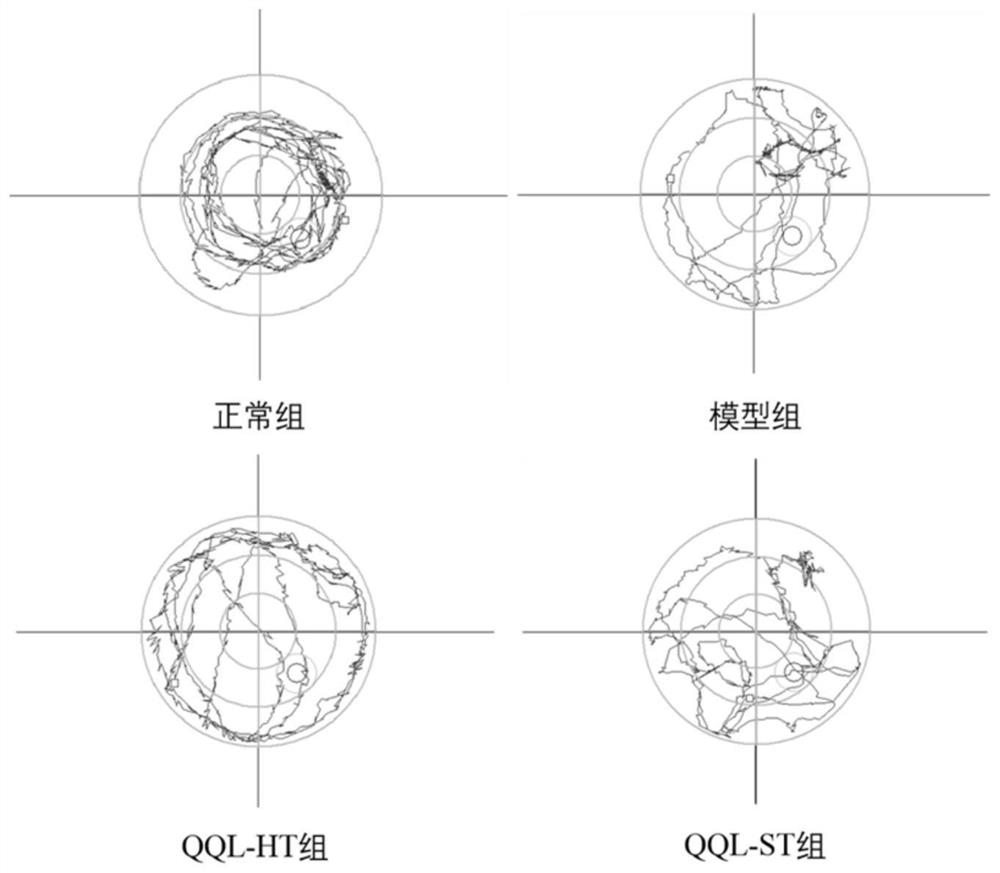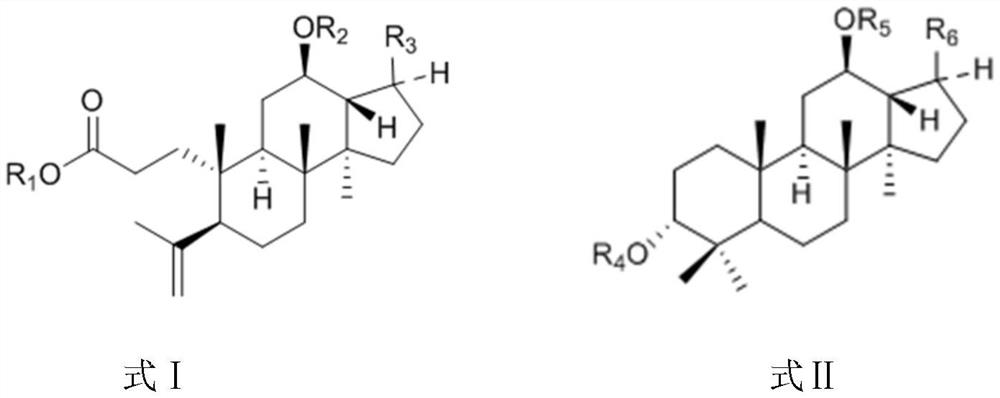Cyclocarya paliurus extract and application thereof
A technology of Cyclocarya paliurus and medicine, applied in the field of Cyclocarya paliurus extract, which can solve the problems of activity and mechanism research.
- Summary
- Abstract
- Description
- Claims
- Application Information
AI Technical Summary
Problems solved by technology
Method used
Image
Examples
Embodiment 1
[0065] 1.1 Treatment of Cyclocarya paliurus medicinal materials: Dry leaves of Cyclocarya paliurus (10Kg), crush and extract with 70% ethanol under reflux at 120°C (100L; 2×2h), concentrate at 60°C to obtain extract, and the concentration time is 2 days. The extract was further dispersed in water, extracted with dichloromethane, ethyl acetate, and n-butanol in sequence, 10 L each time, extracted 3 times, and the extract was concentrated at 60°C for 24 hours to obtain extracts and concentrates of different polar parts. liquid. The dichloromethane part is mainly dammarane-type tetracyclic triterpenoids, which is the No. 1 active part (also known as the dichloromethane active part), marked as QQL-ST, and the n-butanol part is mainly flavonoids The compound, active site number 2 (also known as the n-butanol active site), was annotated as QQL-HT.
[0066] 1.2 Biological activity-oriented screening of active parts of Cyclocarya paliurus: Use models to track and screen the active pa...
Embodiment 2
[0133] 2.1 Immunity-enhancing activity evaluation of dichloromethane active fraction and n-butanol active fraction of Cyclocarya paliurus
[0134] 2.1.1 Experimental Grouping
[0135] 128 experimental animals, weighing 18-22 grams, were randomly divided into 4 groups after one week of adaptive feeding, with 32 mice in each group. Group 1 was tested for organ / body weight, serum hemolysin, and antibody-producing cells; group 2 was tested for delayed hypersensitivity; groups 3-4 were tested for carbon clearance and peritoneal macrophages phagocytosis of chickens Red blood cell experiment. In the experiment, 150 mg / kg QQL-HT, QQL-ST group and a blank control group were set up, with 8 animals in each group. Before the experiment, the test substance was made into a 10mg / mL suspension with distilled water, and the animals in the corresponding dose group were given intragastric administration according to the volume of 0.2mL / 10g BW, and the blank control group was given the same vol...
Embodiment 3
[0192] The application of the dichloromethane active part and the n-butanol active part of Cyclocarya paliurus in the preparation of lipid-lowering medicine.
[0193] 3.2 Evaluation of lipid-lowering activity
[0194] 3.2.1 Establishment and grouping of hyperlipidemia animal models
[0195] After one week of adaptive feeding, the mice were randomly divided into blank control group and model group. The mice in the model group were gavaged with high-fat emulsion (1 mL / kg), and the mice in the blank control group were gavaged with an equal volume of sterile water. Taking the blank control group as a reference, the mice with successful modeling were selected according to the extremely significant difference in TC value (P<0.01) from the blank group, and they were randomly divided into model control group, QQL-ST group and QQL-HT group. During the experiment, the mice in each group had free access to water and food, and the activities and eating conditions of the animals were obs...
PUM
 Login to View More
Login to View More Abstract
Description
Claims
Application Information
 Login to View More
Login to View More - R&D
- Intellectual Property
- Life Sciences
- Materials
- Tech Scout
- Unparalleled Data Quality
- Higher Quality Content
- 60% Fewer Hallucinations
Browse by: Latest US Patents, China's latest patents, Technical Efficacy Thesaurus, Application Domain, Technology Topic, Popular Technical Reports.
© 2025 PatSnap. All rights reserved.Legal|Privacy policy|Modern Slavery Act Transparency Statement|Sitemap|About US| Contact US: help@patsnap.com



